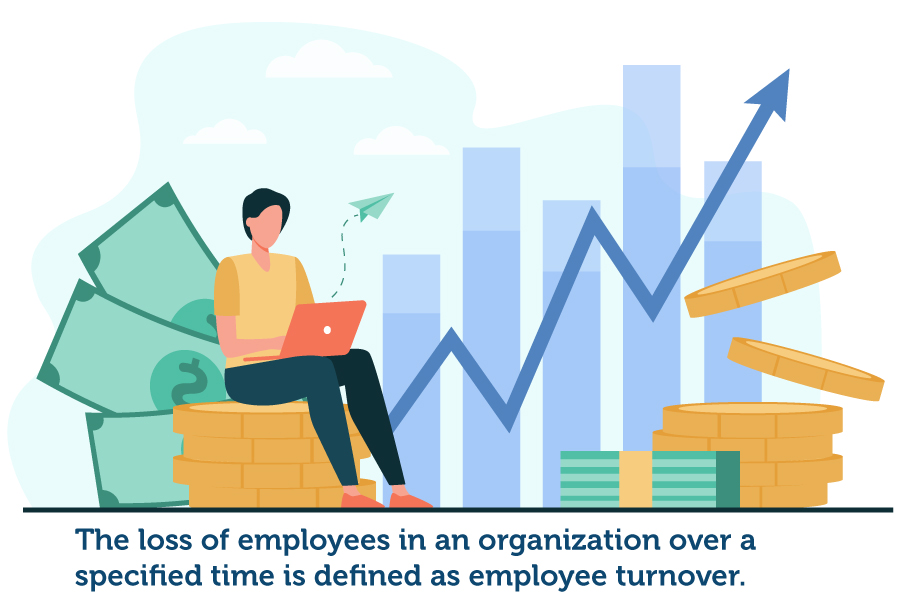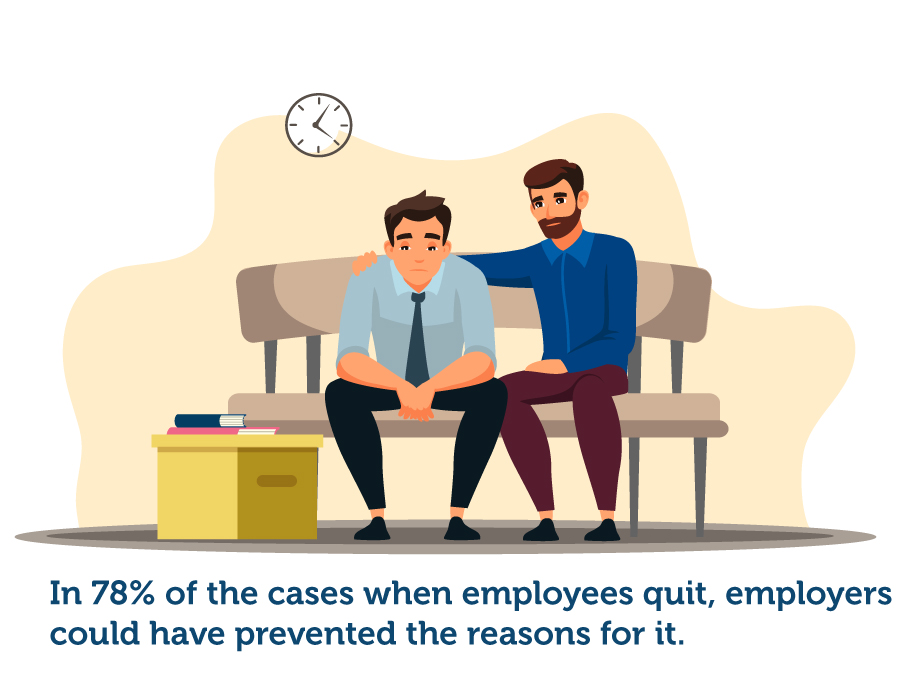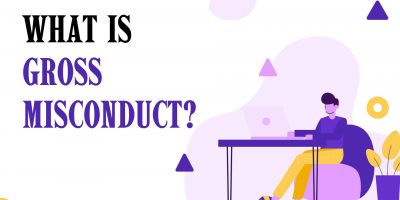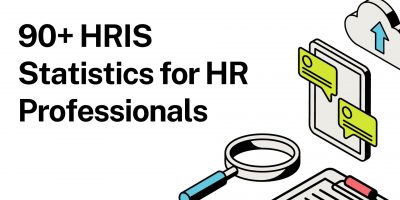
Do Employee Incentive Programs Work?
Despite their popularity, are employee incentive programs truly effective, or do they secretly undermine the very productivity and morale they aim to boost?

It seems that the “Great Reshuffling” isn’t coming to an end, and the current inflation is only elevating its effects. In fact, according to research, 44% of workers are currently looking for new jobs, with 41% willing to change work for a 5% increase. Therefore, it is no surprise that companies are dealing with significant employee turnover.
And even though workers quitting is typical for business, the current turnover rates show that the situation is somewhat alarming. Since fast-growing attrition rates can be costly, it is vital that companies understand what work turnover is, why their employees leave, how to deal with that, and better yet, prevent it from happening.
In the context of human resources, employee turnover refers to the total number of employees exiting a company within a given time frame by replacing an employee with a new one. It takes into account both voluntary turnover—when employees choose to leave—and involuntary turnover, which occurs when individuals are dismissed or laid off.
Causes of turnover range from termination and retirement to death, interagency transfers, and resignations.
A simple definition of employee turnover would be the loss of employees in an organization over a specified time, usually one year.
Hence, when measuring turnover, the business measures the total number of separations. That means every employee who leaves is included in the turnover numbers, regardless of the reason behind their departure.
Although people leaving a company is mainly regarded as harmful, employee turnover is normal and even necessary.
It is natural for people to focus on career growth and for businesses to adopt new strategies to stay competitive in the market.
So, the perfect situation is not to have a zero-turnover rate. Better yet, companies should focus on achieving high retention rates to obtain and maintain low turnover rates.

Irrespective of the nature of the business, employee turnover can be classified into two primary types: voluntary and involuntary. Each of these categories encompasses a variety of reasons why a company experiences employee turnover.
It’s important to note that although the term “turnover” often carries a negative connotation, not all instances of turnover are detrimental.
Employees can exit a business for different reasons: they decide to leave on their own, get fired or laid off, retire, or are transferred to another position. These cases constitute the different types of employee turnover.
Voluntary turnover occurs when employees leave their job because of their own volition. This may involve various reasons, including having poor employee experience, securing another position elsewhere, opting for an internal transfer, or retiring.
Such turnover instances tend to be more costly for businesses as they often entail the departure of high-performing employees.
Voluntary turnover is unavoidable, and no company can completely escape it. But businesses need to understand why their employees are leaving. If the reason has something to do with their experience in the workplace, the company should find ways to improve it moving forward.
Involuntary turnover refers to the termination of an employee from their position. Usually, involuntary turnover occurs when the company is unsatisfied with the employee’s performance if the worker violated policies or committed gross misconduct.
Involuntary turnover also happens when the organization lays off its workers owing to budget cuts or lack of work.
Typically, workers retire because they have reached their retirement age.
However, although it is rarer, sometimes they decide to retire earlier as they feel disengaged at their workplace.
Therefore, companies must ensure that employees retire because their time has come and not because of mediocre employee engagement.
Often, instead of recruiting new employees, companies decide to look within the organization and hire from their internal talent pool. In this situation, workers get promoted or moved to another department.
Usually, this type of turnover is beneficial for businesses because it retains top talent and helps employees with their career growth.
But in sporadic cases, workers request to move to another team or department because of bad managers or dissatisfaction with the team. Thus, it is vital to know the reasons behind an employee’s movement within the organization.
Despite turnover often having a negative connotation, that is not the case with functional turnover. It occurs when employees are dismissed on account of not meeting the company‘s expectations and are replaced with someone who performs better.
Poor performance, absenteeism, and tardiness can be costly for businesses. Thus, hiring a worker who aligns with an organization’s goals can even contribute to organizational profitability.
This type of turnover might be the worst-case scenario with the most significant adverse effects. It occurs when top talent voluntarily decides to leave.
Often, the reason behind a departure is receiving a better job offer from another company or denying a request for working conditions or concessions. Regardless, businesses should try different approaches to ensure their dysfunctional turnover rates are at the lowest level possible.

In HR, terms like employee turnover, attrition, and churn are often used interchangeably, leading to confusion. While we already illustrated the employment turnover meaning, it’s essential to understand the other concepts since each carries a distinct purpose.
By definition, employee turnover refers to the rate at which employees leave an organization over a specific period, both voluntary and involuntary.
Attrition focuses specifically on the natural reduction in the workforce due to voluntary resignations or retirements. Therefore, it excludes terminations or layoffs initiated by the organization.
Conversely, churn, a more recent term commonly associated with customer retention, refers to the departure of employees still in their early tenure with the company, often within the first year of employment.
Beyond their meaning, comprehending these differences is crucial for organizations to tackle workforce challenges effectively.
An employee turnover rate is the percentage of employees who leave the company over a certain period.
Each business decides which types to include when calculating its turnover rates. Usually, they consider all kinds of turnover, except internal movements, like transfers or promotions, since employees don’t leave the organization in these cases.
Calculating turnover is essential for the HR department because minimizing the percentage of people who leave can positively affect a company’s bottom line.
There is a simple formula for calculating employee turnover during a specified timeline.
The formula is simple, but the more intricate part is deciding which data to include in the equation. Each business makes its own choice, but SHRM provides a detailed guide that explains best practices.
HR professionals, who are deeply invested in employee retention and turnover, are among those most prone to leaving their positions.
A 2022 LinkedIn report on turnover rates across different functions places human resources at the top of the list of roles with high turnover rates. At 14.6%, this position ranks four percentage points higher than the average 10.6%, followed by research roles (13.1%), product management (13.0%), marketing (12.9%), and consulting (11.7%).
On the other hand, jobs with the lowest turnover rates are administration (7.8%), operations (8.8%), accounting (9.4%), business development (9.5%), and finance (10%).
As per industry based on LinkedIn data, the professional services industry is exhibiting the highest staff turnover, or 13.4%, followed by tech and media (12.9%), the entertainment industry (11.8%), accommodation (11.8%), and retail (11.4%).
In sharp contrast, industries with the lowest turnover rates are:
Positions in government agencies often offer stable employment, good benefits, and pension plans, which can lead to lower turnover rates. In fact, the analysis revealed that government employees tend to quit their jobs at a rate three times lower than private sector employees.
The data presented indicates a clear pattern of turnover rates across different roles and industries. Considering their significant impact, it is evident that organizations, particularly in the roles and industries mentioned above, need to prioritize effective strategies for retaining their employees and reducing the cost implications.
As normal as it is for people to leave, voluntarily or otherwise, it always negatively affects the business. There is no question that the cost of employee turnover is primarily financial, but it also impacts the brand and the workforce.
According to studies, depending on the position of the employee, losing one can cost from 30% up to 150% of their annual salary. The costs associated with substituting a worker are linked to separation, recruitment, and productivity costs.
Depending on the nature of their departure, when leaving, a worker might be eligible to receive severance pay, unemployment insurance claims, or continued benefits.
Once they leave, their position now must be filled with someone new. Research shows that hiring new candidates costs three times more than retaining old ones.
One worker going away and another replacing them may affect productivity. On the one hand, the new worker might need one to two years to achieve the level of productivity of the previous one. On the other hand, it impacts the productivity of the current staff since losing a colleague, especially if it is one who was a great fit, affects the team dynamic.
Considering all this, it is no surprise that employee turnover also impacts the brand’s image. When a company has a reputation as a revolving-door employer, it becomes more challenging to attract top talent, ultimately affecting the whole workforce dynamic.

Turnover rates are unavoidable, and they can be healthy or high. If a company has healthy rates, it is still prudent to opt for even lower rates. However, in the case of high rates, the employer must immediately deal with the situation.
High employee turnover can have far-reaching consequences that impact multiple aspects of a business, from disruption of workflow and employee morale to substantial financial losses and damaging the company’s reputation.
Thus, the first step toward dealing with high employee turnover is to find out what is causing people to leave. Understanding the reasons behind employees’ decision to depart provides more insight into the resolution of the issue.

Implementing changes to reduce employee turnover might be challenging, but since 78% of quitting cases could be prevented, it is well worth the time and effort.
Now, whatever an organization should do highly depends on why most of its staff leave, but some general tips could help improve the overall employee retention.
Wellness benefits, paid time off, flexible benefits, and student loan repayments are excellent benefits examples that will make workers more satisfied with their companies, thus reducing turnover.
Analyzing turnover rates should be a priority for every organization. But they must be considered in the industry context since specific industries have higher rates than others. To better understand how well it retains talent, a business can and should benchmark its turnover rate across related industries.
The turnover rate is significant because it predicts the risk of employees leaving and the possibility of retaining recruits. It also allows comparisons with other companies in the sector and weighing turnover rates.
Additionally, depending on the reason for departure, it also shows whether the organization offers fair compensation, whether the company suits the workforce, whether the employees see themselves as part of the business in the future, and other factors.

Employee turnover can cost companies millions each year. It signals significant issues in the company, such as poor culture, unfair salaries, or bad management.
Thus, businesses should always be alert about the level of their turnover rates and whether they are increasing or decreasing since they can tell much about the organization.
And most importantly, organizations should act accordingly to avoid high employee turnover rates, which bring about substantial losses.
Content Writer at Shortlister
Browse our curated list of vendors to find the best solution for your needs.
Subscribe to our newsletter for the latest trends, expert tips, and workplace insights!

Despite their popularity, are employee incentive programs truly effective, or do they secretly undermine the very productivity and morale they aim to boost?

Explore the critical connection between HR risk management strategies and their impact on recruitment effectiveness. Learn how mitigating risks can lead to more successful hiring outcomes.

Gross misconduct is one of the reasons why companies must have employee handbooks that clearly distinguish between appropriate and inappropriate behavior and outline the repercussions in the event of misconduct.

Explore HRIS statistics for informed decision-making and streamlined human resource management.
Used by most of the top employee benefits consultants in the US, Shortlister is where you can find, research and select HR and benefits vendors for your clients.
Shortlister helps you reach your ideal prospects. Claim your free account to control your message and receive employer, consultant and health plan leads.